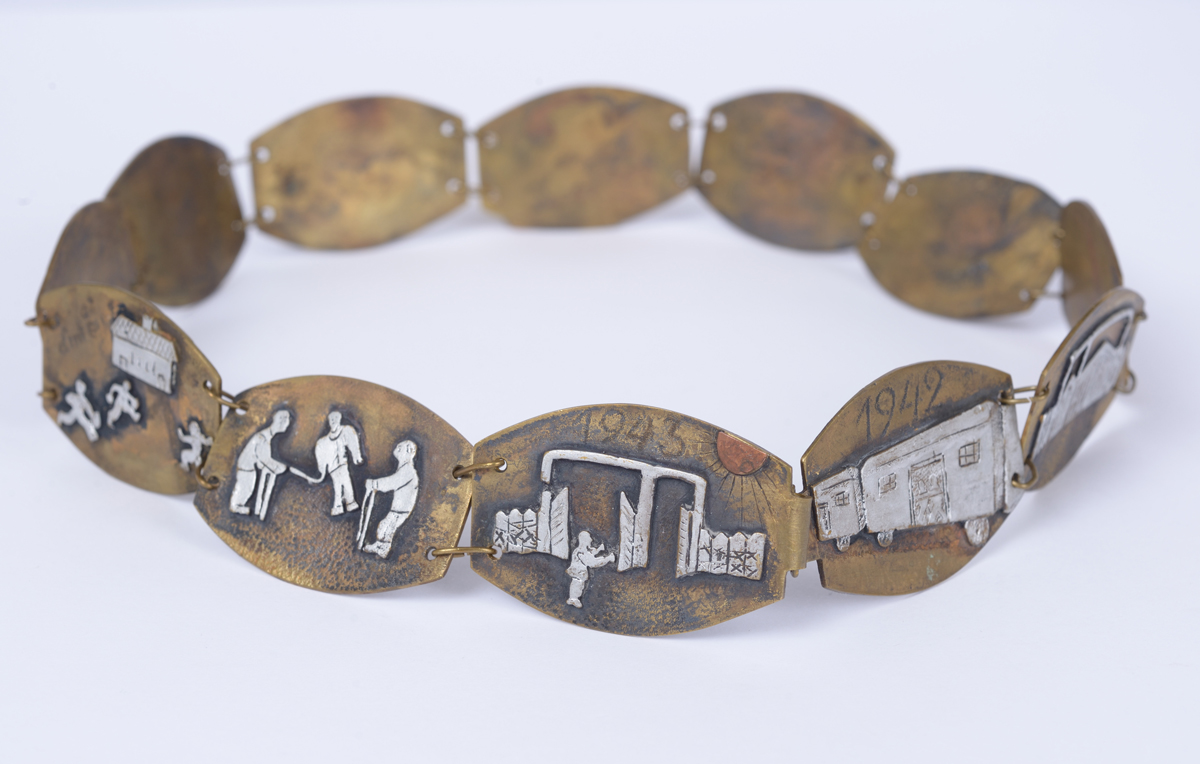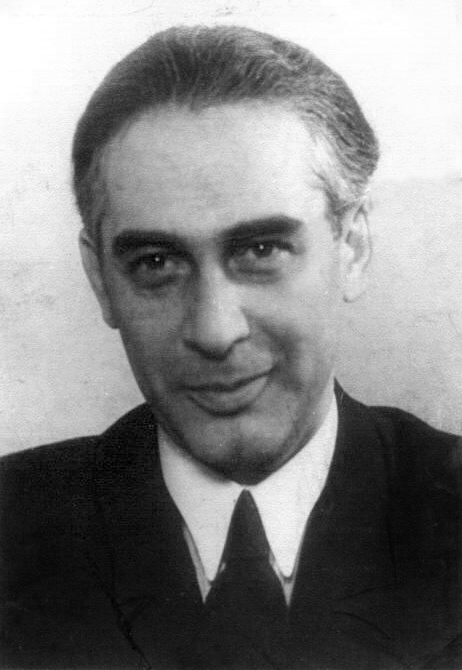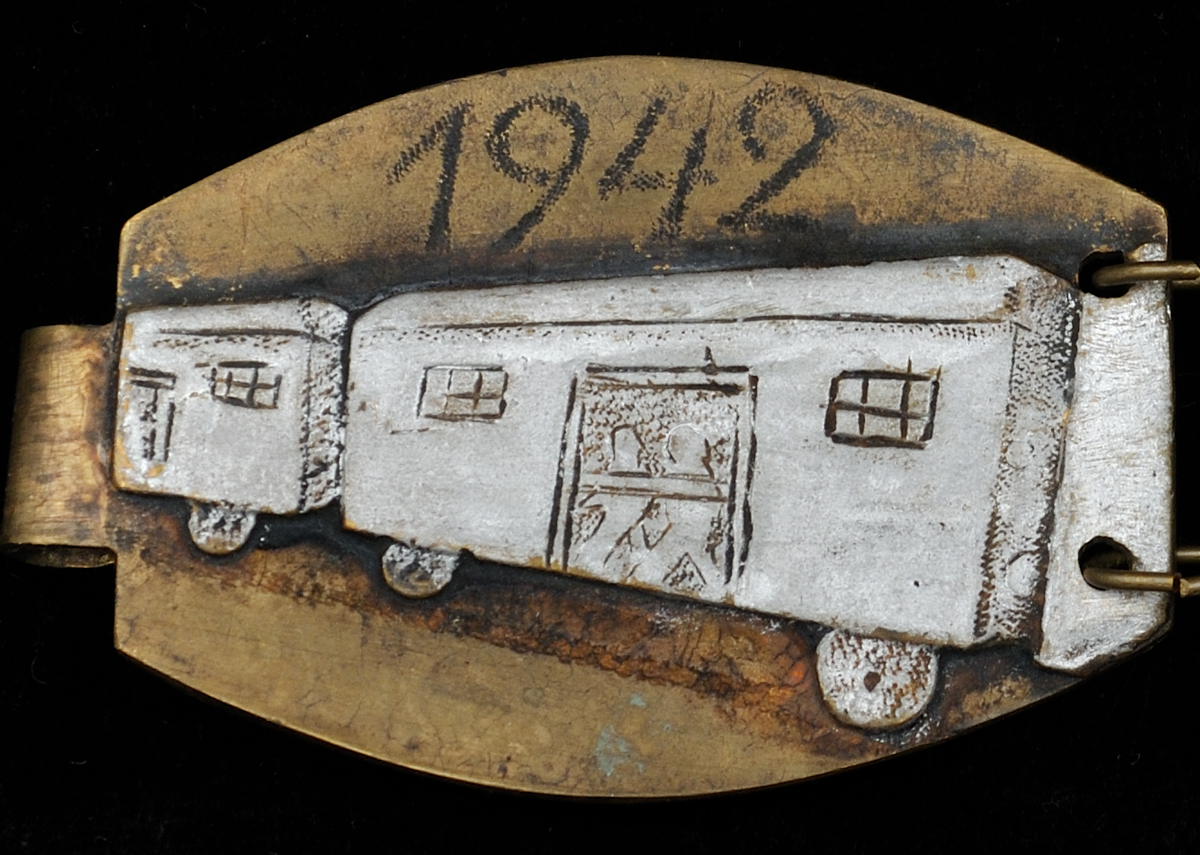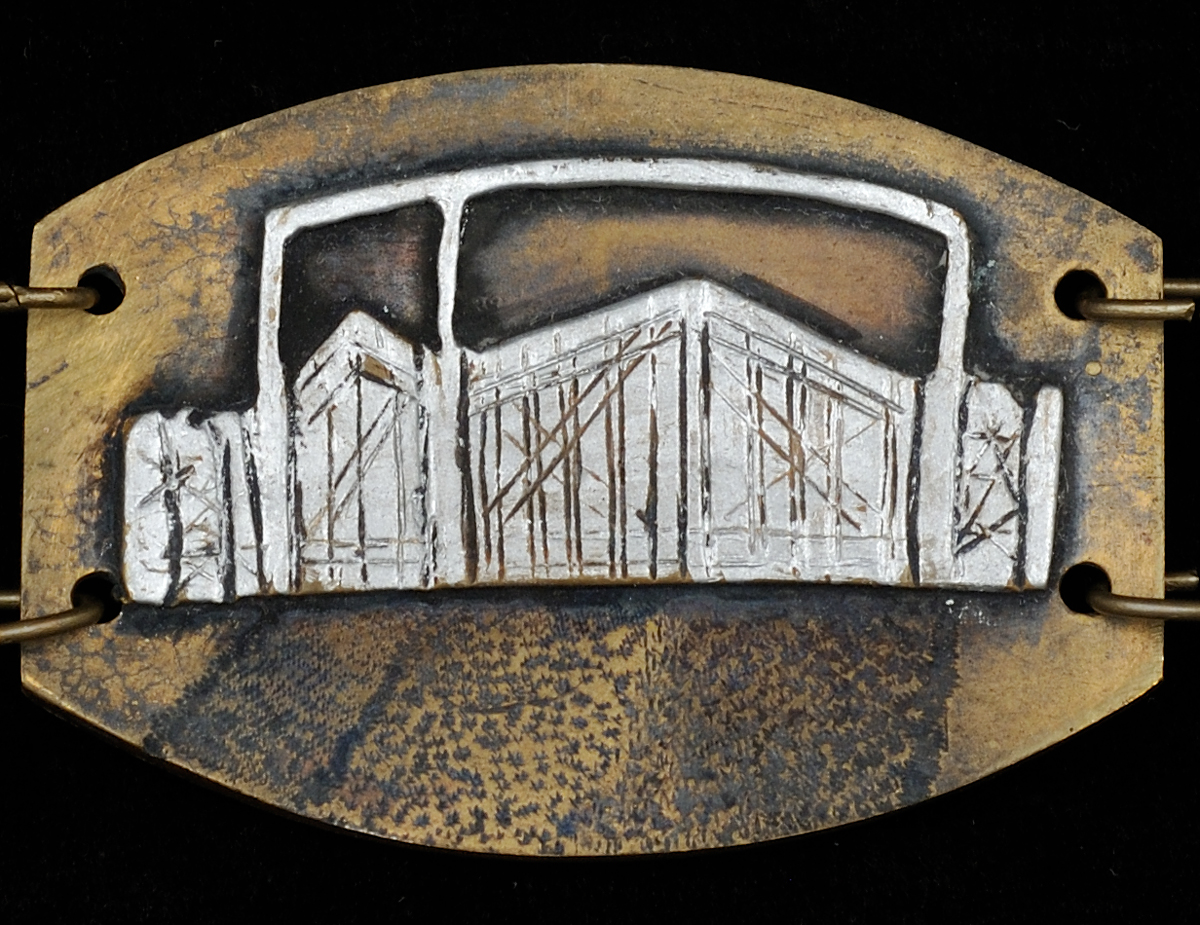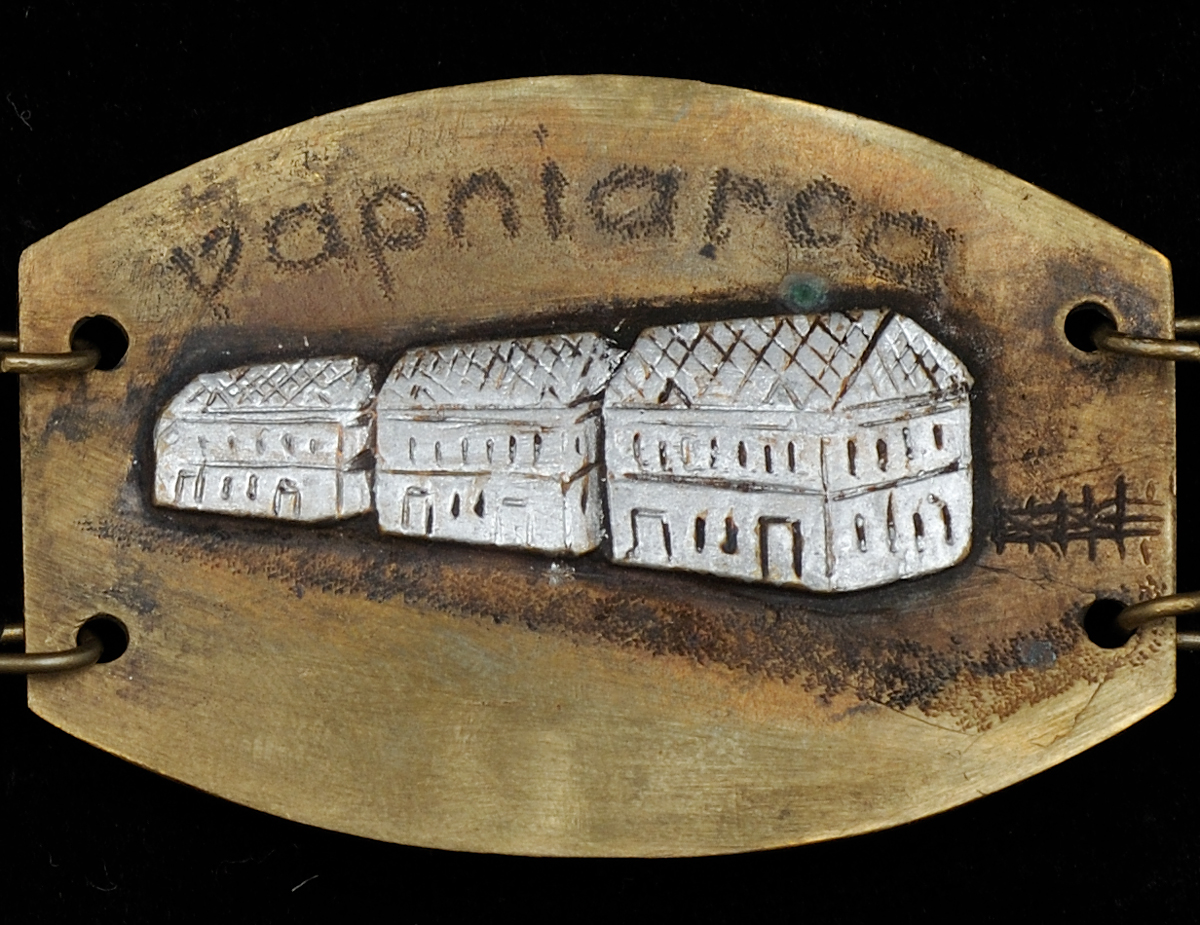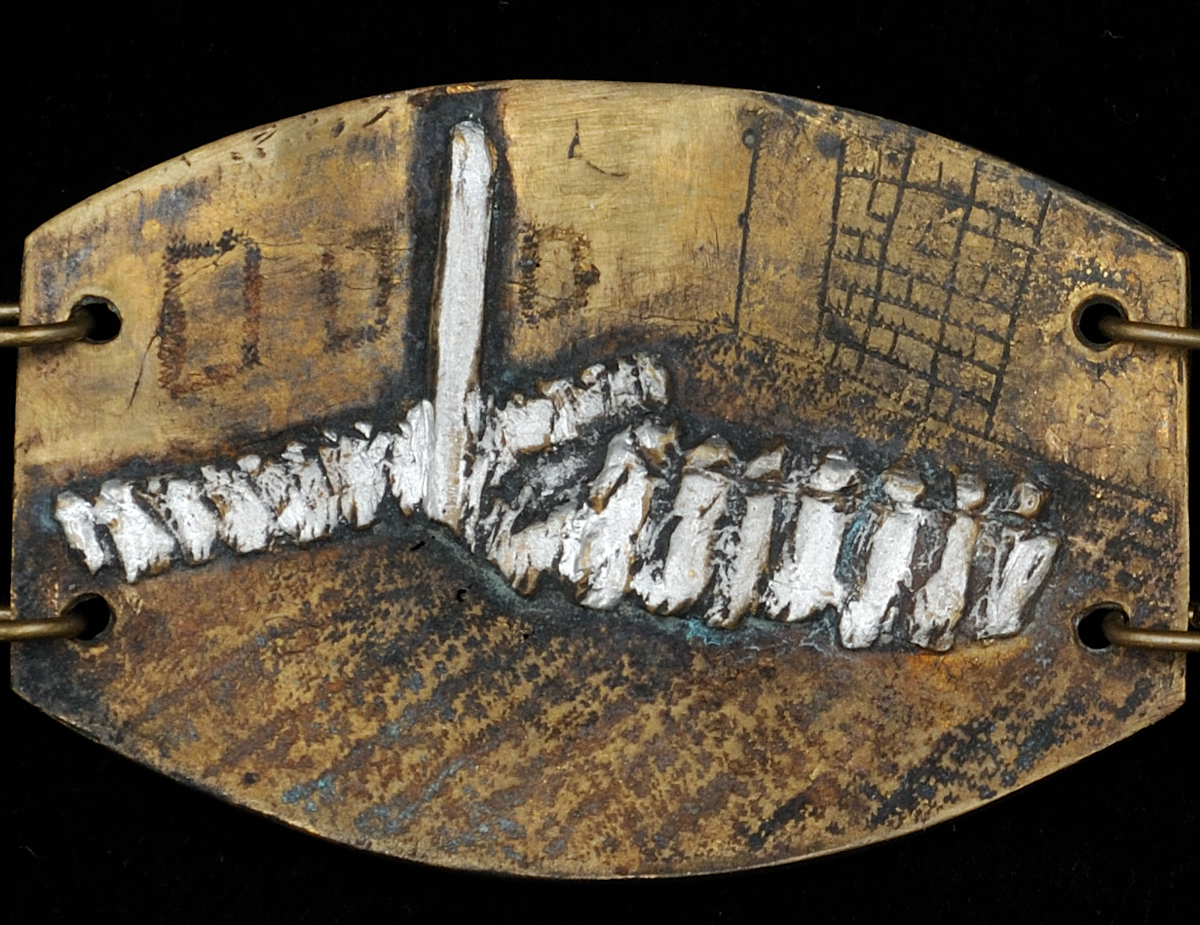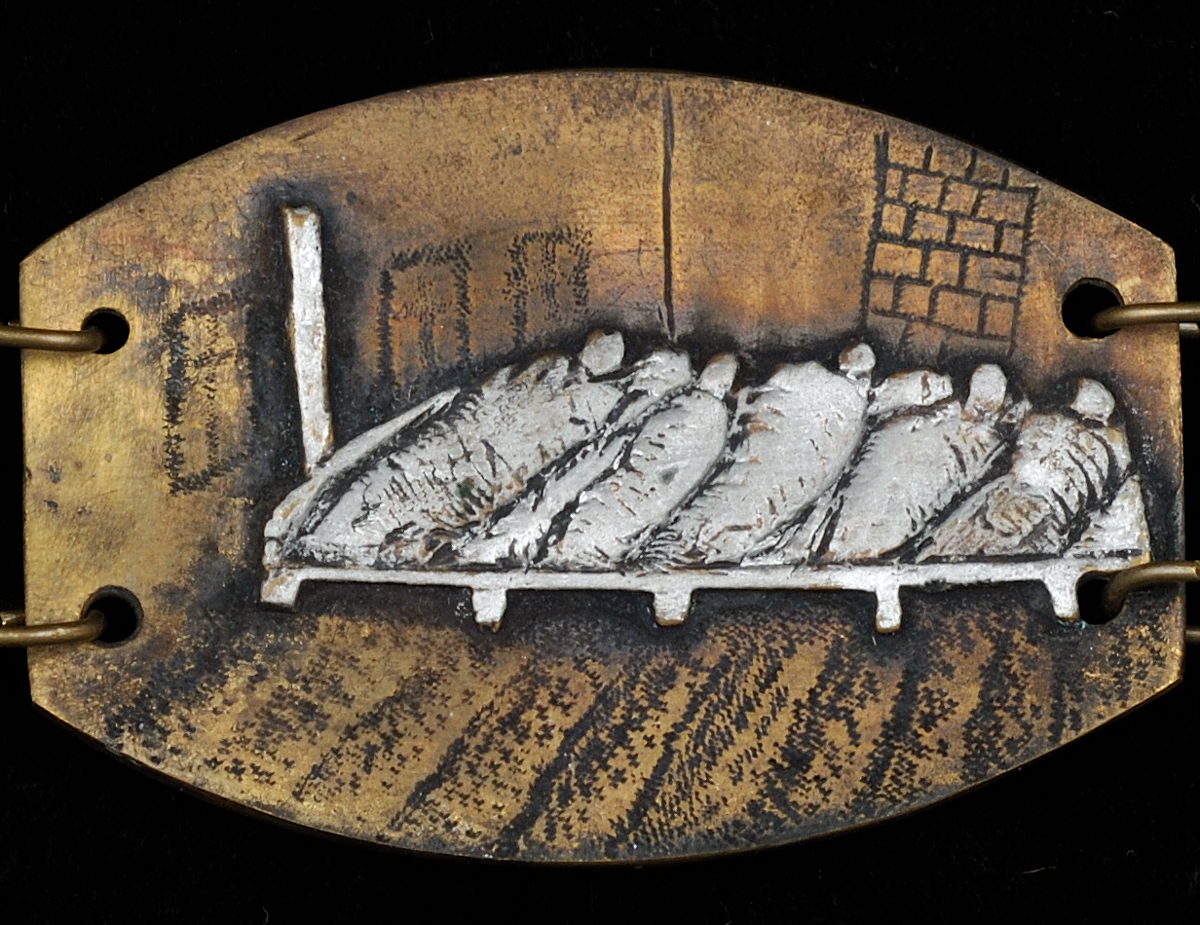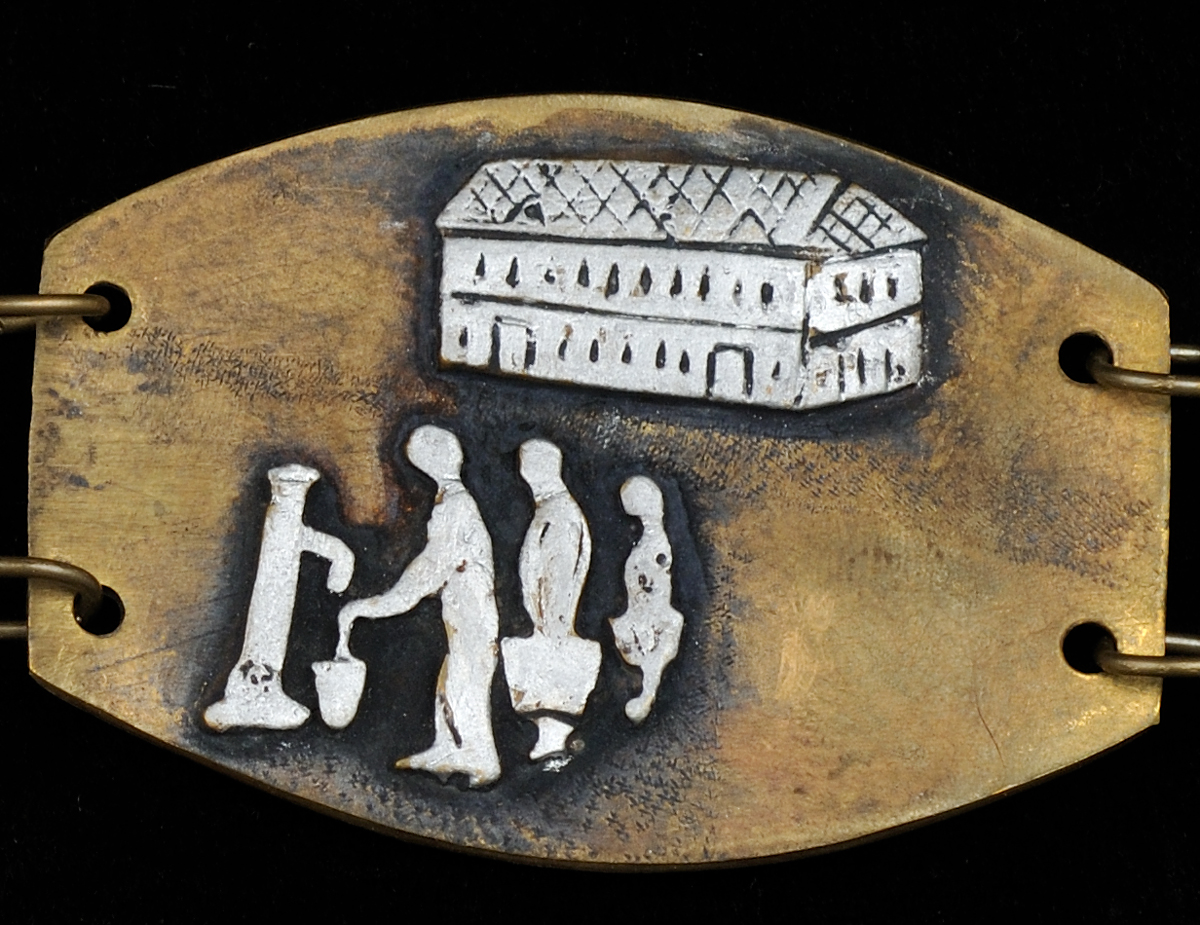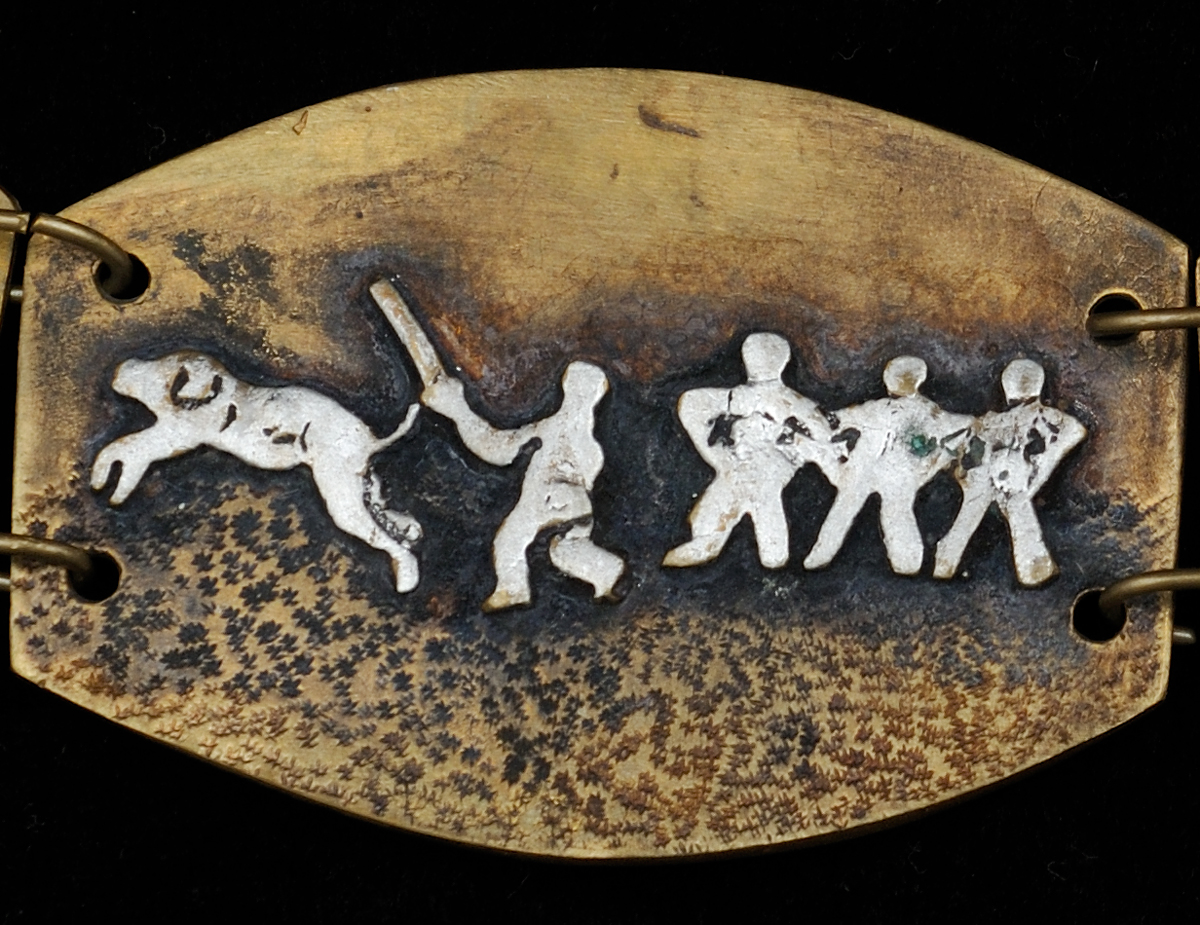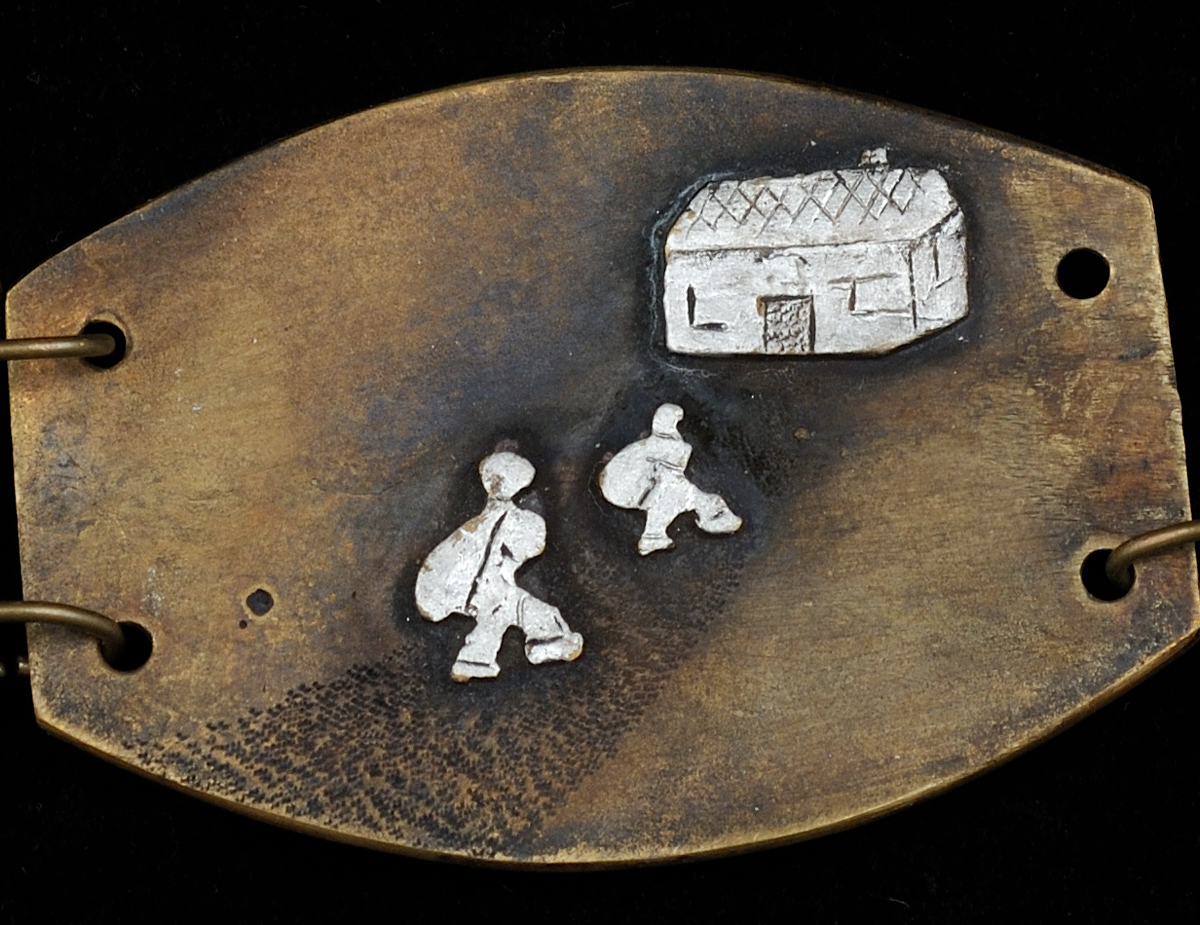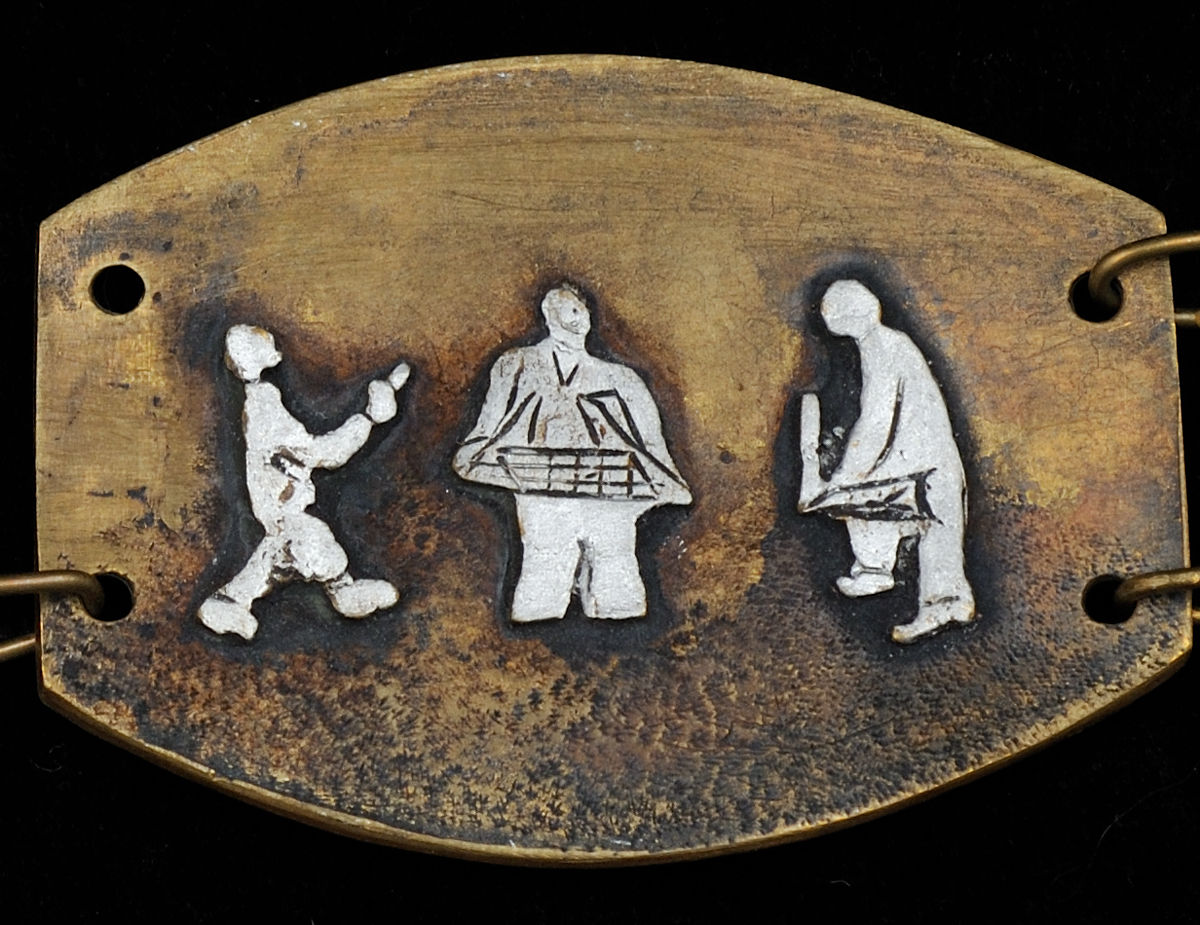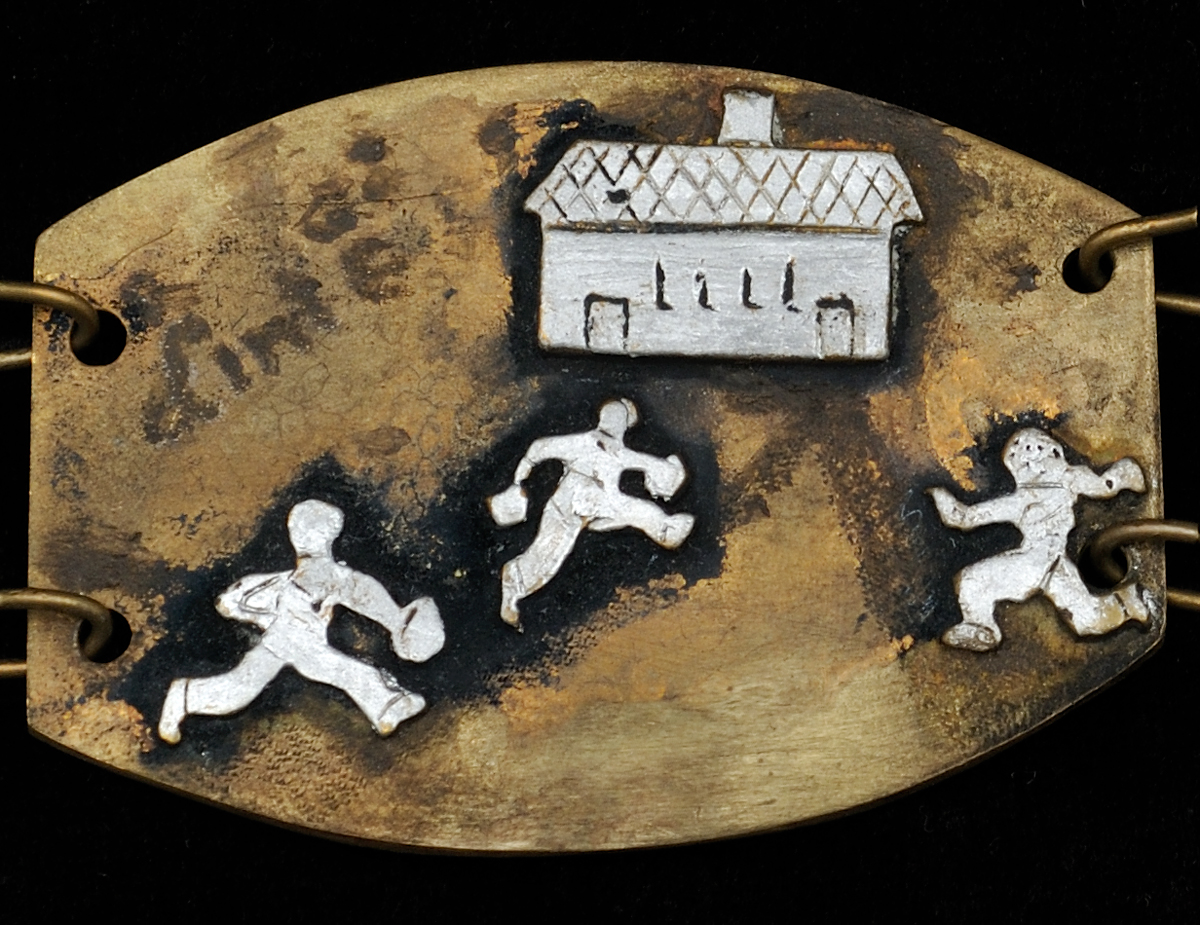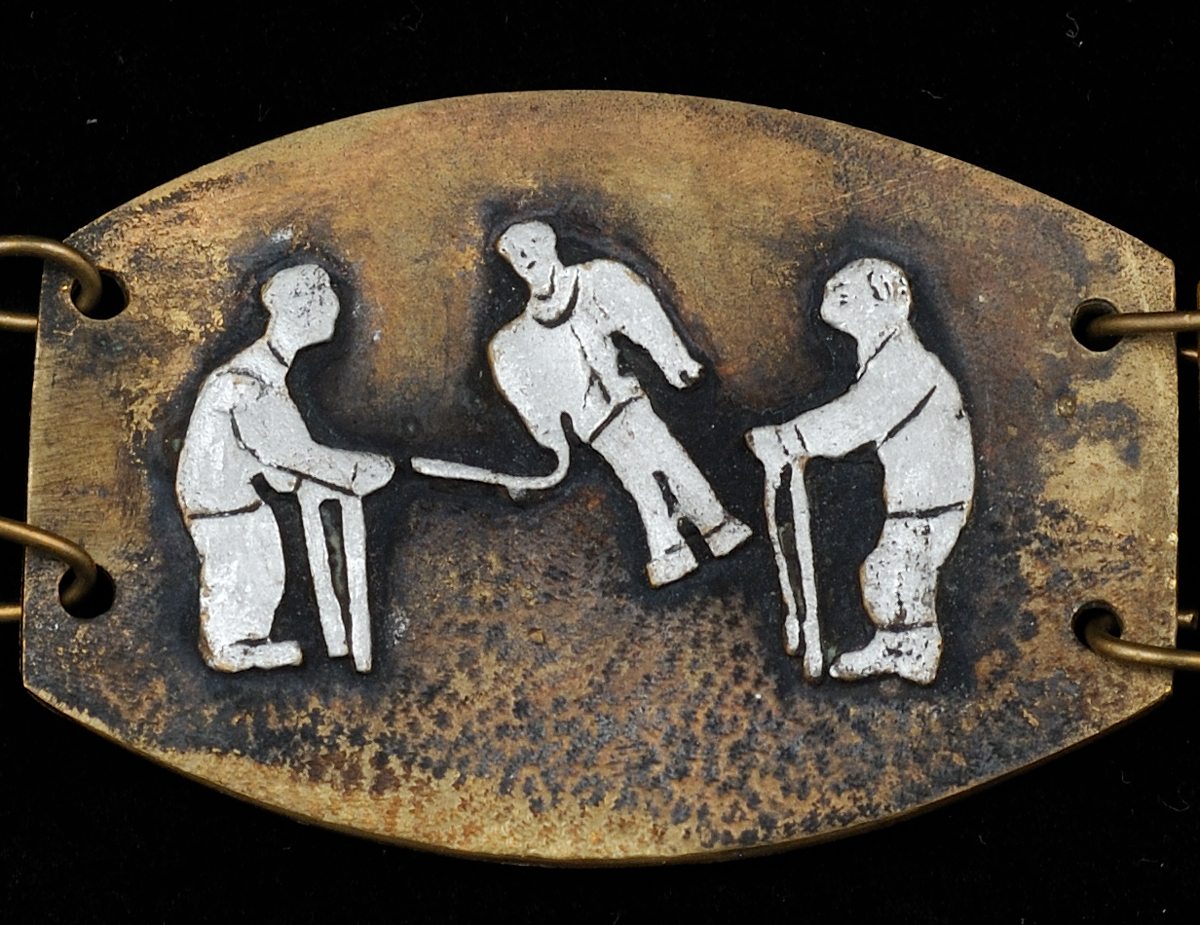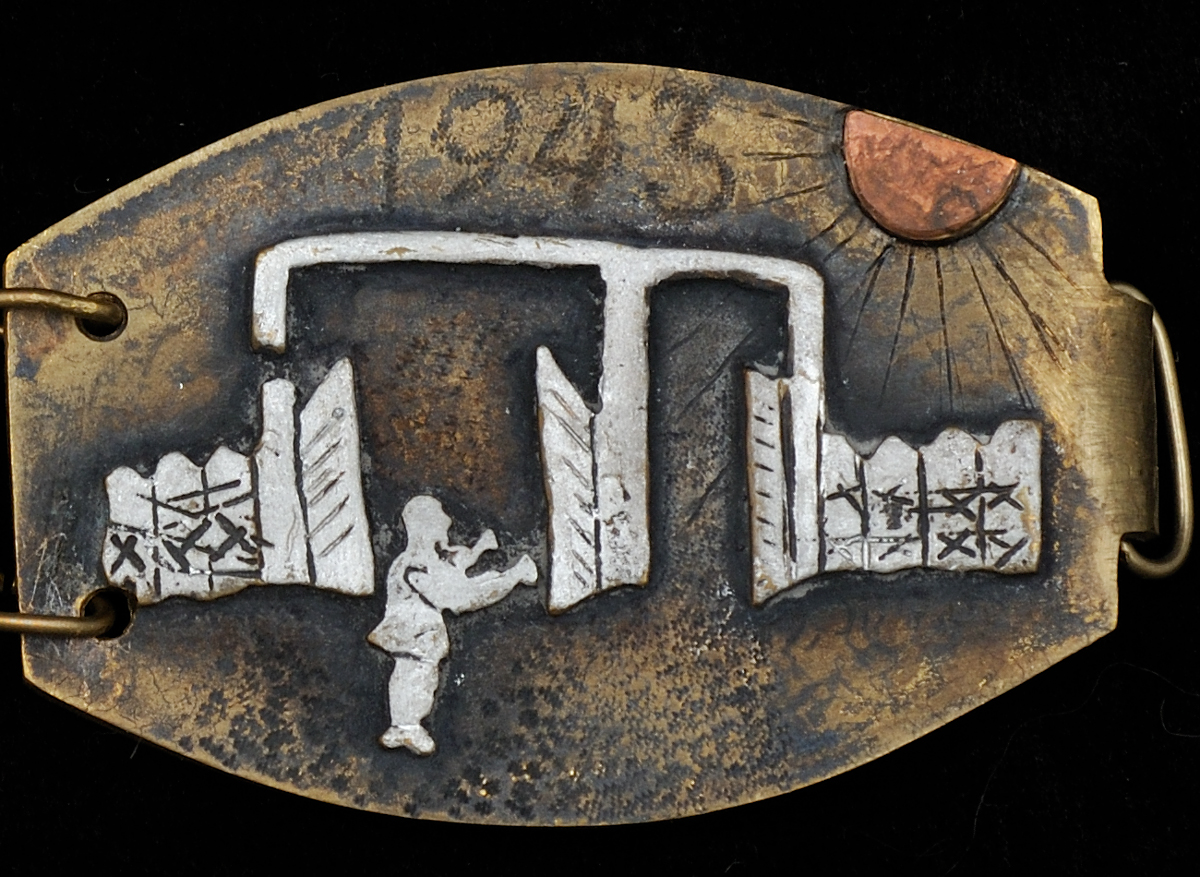The 12 sections of this belt were handmade in the Vapniarca camp by Iuliu (Gyula) Frenkel (1898-1967), using copper and aluminum. His plight, and that of his fellow prisoners is memorialized in this belt, which he made under the brutal and oppressive conditions of camp life.
Gyula Frenkel was imprisoned in Caracal in 1940, and after his release, he was deported to the Vapniarca concentration camp in 1942. In 1943 he was transferred to the Grosulovo camp, and in March of the same year, he was sent to Targu-Liu prison where he remained until his release on 23 August, 1944.
The sections of the belt describe the chain of events experienced by the camp inmates, and illustrate his own experiences and observations as a concentration camp prisoner, from his arrival in the crammed cattle-car, until his transfer to another camp. The explanation for the links was provided by Mathias Gal, who was a former prisoner in the Vapniarca Camp.
Yad Vashem Artifacts Collection
Courtesy of George Frenkel, NY, USA & Julius Frenkel, Jerusalem, Israel
Section 1
The journey to the camp lasted 8 days. The prisoners were crammed into cattle cars like animals. In September 1942, they were one of the many groups to be taken on the journey to death in Transnistria.
Section 2
This section depicts the camp gate. The prison was encircled by three rows of barbed wire fence and several guard towers.
Section 3
These were the cramped quarters they were piled into every evening. The windows were broken, there were no beds, and the place was overrun by typhus-infected lice. In front of the buildings was a field of grass that they ate from time to time. Beyond the field was a building that served as the kitchen, alongside which ran the ditch where they relieved themselves. At Vapniarca they felt that death was a certainty – the only question was whether they would starve, be shot, contract typhus or succumb to another ailment that seem to disable all of them.
Section 4
This link depicts the roll calls. Here they received their daily orders, which were often accompanied by very real threats of a shot to the head if they did not do exactly as they were ordered.
Section 5
They slept one on top of the other, packed like sardines row after row. When they woke up after another restless night, they just hoped to avoid the lice and mites crawling around them so that they wouldn’t catch typhoid. Each morning they would be given their duties, and escorted by armed guards to make sure they carried them out.
Section 6
There was only one source of drinking water for more than 1500 prisoners. The fountain didn’t flow, but rather dripped water. Here they crowded together and patiently waited their turn in the hope of getting half a can of water to drink.
Section 7
The guards used dogs to threaten them and make their lives even more intolerable.
Section 8
This section depicts the prisoners transporting bags of fodder to the annex of the prison kitchen. Their daily ration constituted 200 grams of bread, and a warm fodder meal twice a day. In the winter months they collected snow from the yard and melted as much as they could, to help them prepare the food in the kitchen.
Section 9
Following the Nazi defeat at Stalingrad, life in the camp became easier. The Romanian government decided to end the Jewish deportations to Transnistria, thus saving the rest of the Jewish population. This new atmosphere allowed an element of culture to develop in the prison camp. There was a choir, which performed Beethoven’s 9th Symphony. In this link, Frenkel expresses the new mood and the hope that accompanied it.
Section 10
This section illustrates how their diet affected them. Immediately after eating the fodder (lathirus sativus), they had to run to the ditch. They could not digest this type of food, and the prisoners suffered many stomach and urinary tract complications as a result.
Section 11
Some of the prisoners became paralyzed and could only walk with the help of crutches. The doctor prisoners amongst them were of the opinion that the fodder they were given was actually poisoning them, causing paralysis and eventual death. They decided that they wouldn’t eat the fodder anymore. The government sent doctors who confirmed the diagnosis of their fellow doctor prisoners. As a result, their provisions changed. They were even allowed to receive small food parcels from relatives.
Section 12
As the Nazis retreated, the Vapniarca prison had to be closed down. As the section depicts, the prison gates opened, and the prisoners were either released or sent to the next prison. Gyula Frenkel was taken to a new prison camp in Grosulovo, together with the remaining 600 prisoners. In March of the same year, he was sent to Targu-Liu prison where he remained until his release on 23 August, 1944.




